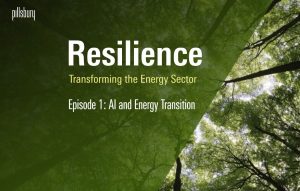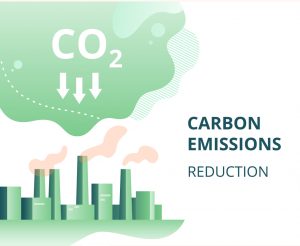 Colleague and host Shellka Arora-Cox recently sat down with Sandhya Ganapathy, CEO of EDP Renewables North America, to discuss the fascinating intersection of the energy transition and artificial intelligence.
Colleague and host Shellka Arora-Cox recently sat down with Sandhya Ganapathy, CEO of EDP Renewables North America, to discuss the fascinating intersection of the energy transition and artificial intelligence.
Articles Posted in Renewables
Connection Corner: Kevin Yaich of Shikun & Binui USA Energy
The Real Estate and Construction industry may be huge, but ultimately, as with all industries, it comes down to the people who help make it all come together. From time to time, we like to profile some of those people.
 Born and raised in Paris, Kevin Yaich set his eyes on a career abroad while in business school. After internships in Russia and Singapore, Yaich worked as a financial analyst for AIG and JPMorgan Chase. His exposure to the world of renewables came soon after when he spent almost eight years working for NextEra Energy Resources before assuming his current role as president of Shikun & Binui USA Energy. S&B is a global infrastructure group with its global HQ in Israel. Shikun & Binui USA Energy (S&B USA Energy) was launched as a growth-oriented investment platform in March 2020. They are focused on owning and operating solar, wind, and battery storage projects under long-term contracts with creditworthy counterparties.
Born and raised in Paris, Kevin Yaich set his eyes on a career abroad while in business school. After internships in Russia and Singapore, Yaich worked as a financial analyst for AIG and JPMorgan Chase. His exposure to the world of renewables came soon after when he spent almost eight years working for NextEra Energy Resources before assuming his current role as president of Shikun & Binui USA Energy. S&B is a global infrastructure group with its global HQ in Israel. Shikun & Binui USA Energy (S&B USA Energy) was launched as a growth-oriented investment platform in March 2020. They are focused on owning and operating solar, wind, and battery storage projects under long-term contracts with creditworthy counterparties.
Update Regarding New York City’s Climate Mobilization Act (CMA) and the Reduction of Carbon Emissions in New York City
In a previous post, we described how the New York City Climate Mobilization Act, 2019 (the CMA, or Local Laws 92, 94, 95, 96, 97, and 147 enacted in 2019) was passed with the goal of reducing New York City’s carbon emissions by 40 percent by 2030 and by 80 percent by 2050 (as against a 2005 baseline as provided for in item 3 of Local Law 97). It is the most ambitious building emissions law to be enacted by any city in the world. The CMA impacts “Covered Buildings” (described below) and, besides contemplating the retrofitting of Covered Buildings to achieve energy efficiency and establishing a monitoring program for Covered Buildings, the CMA contemplates compliance by means of the purchase of carbon offset credits or renewable energy. (Note the new NYC Accelerator program, launched in 2012 by the Mayor’s Office of Sustainability, provides guidance regarding energy-efficient upgrades to properties and emission reductions.)
Shuttered Venue Operators Grant Program Updates
Although the Small Business Administration has not yet opened the program to grant applicants, the agency recently released a series of FAQs that address certain definitions and eligibility criteria for prospective grantees. David L. Miller provides insights on the updated Frequently Asked Questions (FAQs) for the Shuttered Venue Operators Grant (Grant) Program published by the SBA in the recent alert Updates on Shuttered Venue Operators Grant Program.
IRS Extends Continuity Safe Harbor for Renewable Energy Projects
The IRS issues anticipated guidance providing relief to developers facing delays related to COVID-19. In the recent alert, “IRS Extends Continuity Safe Harbor for Renewable Energy Projects,” colleague Jorge Medina, discusses how the guidance also provides some clarity on the impact of supply chain disruptions on equipment orders placed later in 2019, primarily associated with solar and fuel cell companies, by addressing the application of the “3½ month rule” in light of COVID-19 and providing a new safe harbor.
A Changing Climate for State Policy-Making Regarding Climate Change
 Issued by 13 federal agencies, the 2018 Fourth National Climate Assessment presented a stark warning on the consequences of climate change for the United States. The report predicts that if significant steps are not taken to rein in global warming, the damage will reduce the U.S. economy by as much as 10 percent by the end of the century. The report, which was mandated by Congress and made public by the White House, is notable not only for the precision of its calculations and bluntness of its conclusions—the 1,656-page assessment lays out the devastating effects of a changing climate on the economy—but also in how it conflicts with President Donald Trump’s environmental deregulation plan. U.S. policy efforts at the state and local levels are ramping up to address this complex topic. These include:
Issued by 13 federal agencies, the 2018 Fourth National Climate Assessment presented a stark warning on the consequences of climate change for the United States. The report predicts that if significant steps are not taken to rein in global warming, the damage will reduce the U.S. economy by as much as 10 percent by the end of the century. The report, which was mandated by Congress and made public by the White House, is notable not only for the precision of its calculations and bluntness of its conclusions—the 1,656-page assessment lays out the devastating effects of a changing climate on the economy—but also in how it conflicts with President Donald Trump’s environmental deregulation plan. U.S. policy efforts at the state and local levels are ramping up to address this complex topic. These include:
Sustainability Puts Down Roots in Real Estate
 Sustainability has evolved from a passing trend or niche preference into an undeniable, growing driver of the real estate market. This is particularly true as millennials comprise an increasing proportion of the workforce, home-buying population, and individuals influencing the future of real estate development in the United States.
Sustainability has evolved from a passing trend or niche preference into an undeniable, growing driver of the real estate market. This is particularly true as millennials comprise an increasing proportion of the workforce, home-buying population, and individuals influencing the future of real estate development in the United States.
The Proposed House Green New Deal Resolution
A Resolution has been proposed to the House for consideration that would recognize the Federal Government’s duty “to create a Green New Deal.” It sets forth a very ambitious 10-year program to mobilize and transform every aspect of American life to combat the threats of climate change by transitioning to an economy based upon 100% clean and renewable energy.
Updates to the CEQA Guidelines Have Been Finalized
The California Natural Resources Agency (CNRA) recently posted final adopted text for amendments to the CEQA Guidelines. The result of over five years of development efforts by the Governor’s Office of Planning & Research and CNRA, the amendments are the most comprehensive update to the CEQA Guidelines since 1998. In “Natural Resources Agency Finalizes Updates to the CEQA Guidelines,” Pillsbury environmental attorneys Kevin Ashe and Eric Moorman explore the wide range of issues covered in the amendments, including the new Vehicle-Miles-Traveled (VMT) methodology for analyzing transportation impacts; use of regulatory standards as significance thresholds; environmental baselines; and numerous procedural and technical improvements.
Insight: U.S. Energy 2019
Pillsbury energy partner Rob James authored Energy 2019: USA, in which he provides an overview of the current U.S. energy marketplace and discuss
- Ongoing incentives at the state level for offshore wind, other forms of renewable power, and electric storage;
- Impacts of dueling tariffs and trade restrictions on the energy industry;
- Reversals of federal policy on greenhouse gas emissions and on lands open to hydrocarbon development;
- The Federal Energy Regulatory Commission’s decision in Calpine v. PJM Interconnection and its consequences for wholesale electricity markets; and
- Cybersecurity and blockchain developments affecting the national grid.
 Gravel2Gavel Construction & Real Estate Law Blog
Gravel2Gavel Construction & Real Estate Law Blog


